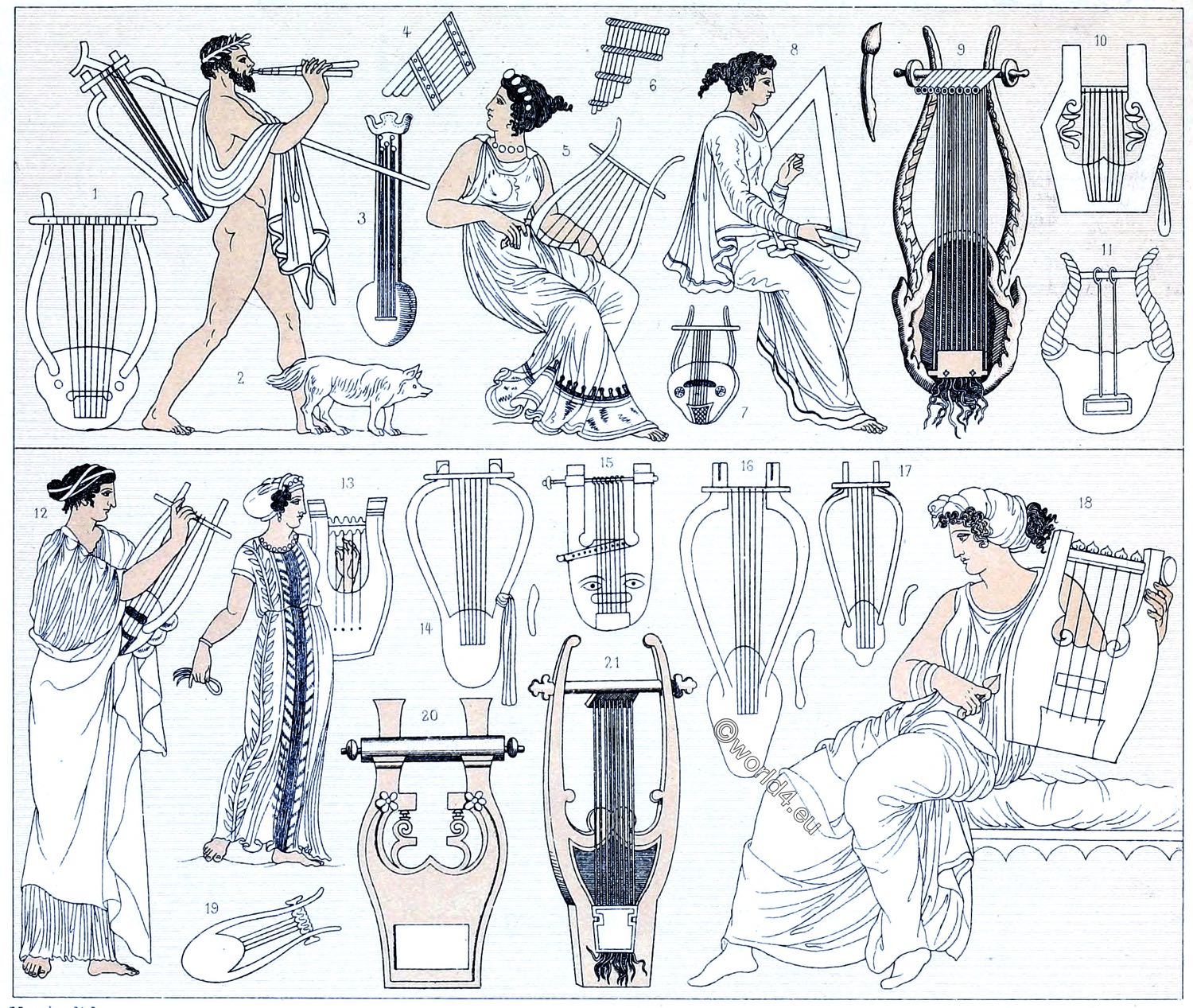
GREEK IONIC – PLATE NO. 10
This picture shows two typical examples of the more elaborate Ionic dress. This type of Greek costume shows certain Oriental influence that changed the Doric into a richer, more luxuriant ensemble. The only difference between the costume of the man shown here and the costume of the man on Plate 9 is the neck treatment. Instead of only one brooch there are six along the top edges of the front and back. Because of the softness of the material (wool or linen), a sort of sleeve is formed. The Ionic chiton seems to have been the usual masculine dress in Greece. Though in earlier periods it was worn long by young and old alike, by 400 B. C. the short chiton shown here was worn by everyone but charioteers, priests, and other people engaged m special occupations. Note the short hair, fillet, and simple sandals.
The woman wears exactly the same dress as the man, although her garment shows more clearly the general characteristics of Ionic dress. Her chiton is fastened with eight large brooches instead of six small ones as on the man. In addition to the acanthus leaf pattern all over her chiton, she has a Greek key or fret border down the center from her waist to the hem. She is wearing a cloak draped in an interesting manner. It is probably a rectangular piece of wool or linen pulled over one shoulder and under the right arm; a leather belt is then fastened over it to keep it in that position. Finally the cloak is pulled over the belt in such a way that it is shorter on one side than on the other. When she lowers her left arm, the left side will fall and cover her upper arm.
She is wearing her hair long, tied with u double fillet. This fillet is an extra long band that can cross the head several times. Her sandals are like the rain’s, except for the arrangement of the leather thongs.
Compared to the Doric dress, the one pictured here is more elaborate (just as the Ionic column behind them is somewhat more complicated than the Doric of Plate 9). Compared to modern dress, it was an easy, comfortable, simple style of clothing.
Source: Museum Extension Project. History of Costume.
[wpucv_list id=”136457″ title=”Classic grid with thumbs 2″]Related
Discover more from World4 Costume Culture History
Subscribe to get the latest posts sent to your email.






